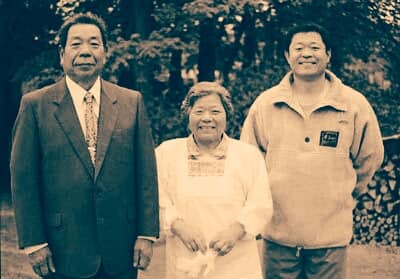AJ: In some dojos teachers have their students practice the techniques after showing them only two or three times, without further explanation, but in Iwama you always give very detailed explanations.
The reason Saito Sensei explains the techniques in detail is that he would like everyone to master each technique as quickly as possible. His teaching method is the result of making many mistakes himself over the years and learning from them.
In his last years O-Sensei would demonstrate a technique as quick as a flash, then judge the students’ ability from how well they understood it. As Saito Sensei wants everybody to improve more quickly than he did, he stops his students immediately when they make a mistake and teaches them in detail. He would not be able to do so if he had been doing easy training. If your partner yields to you all the time, you can’t tell if you are executing techniques properly.

By holding strongly your partner helps you to understand whether you are doing the techniques correctly or not. This does not mean he should hold in a nasty or devious way, although in such cases the technique can be changed to deal with the situation.
Your partner should hold you firmly, but correctly, then you learn to blend with his power. This is the basic training. If he takes a cross-over grip from above or below, you should change your response accordingly. When your opponent comes to hold you, lead him skillfully. You lend your bodies to each other so you can train seriously.
To be continued…
Source: Facebook/Aikido




One thought on “The great masters: Hitohiro Saito (Part 7)”
Comments are closed.